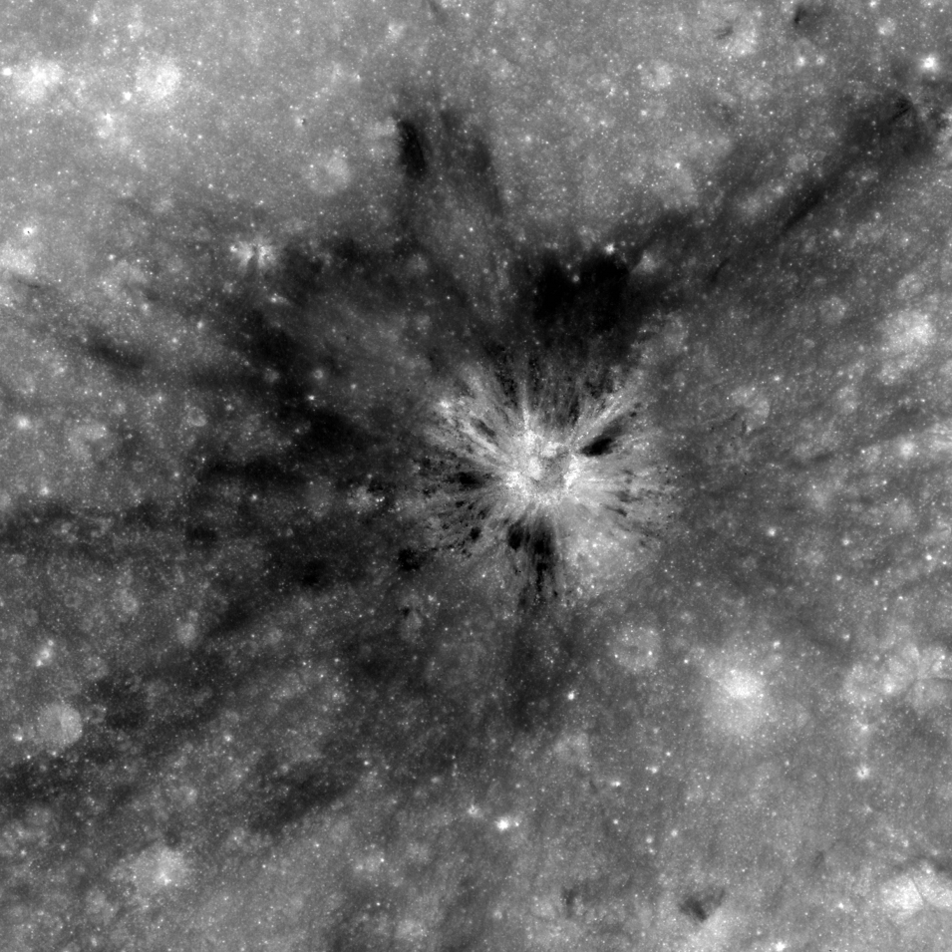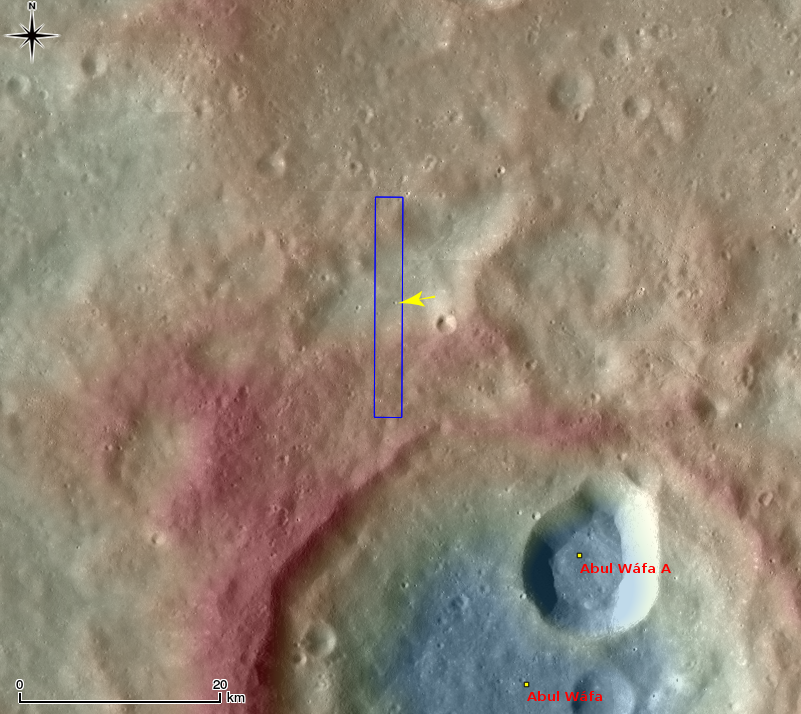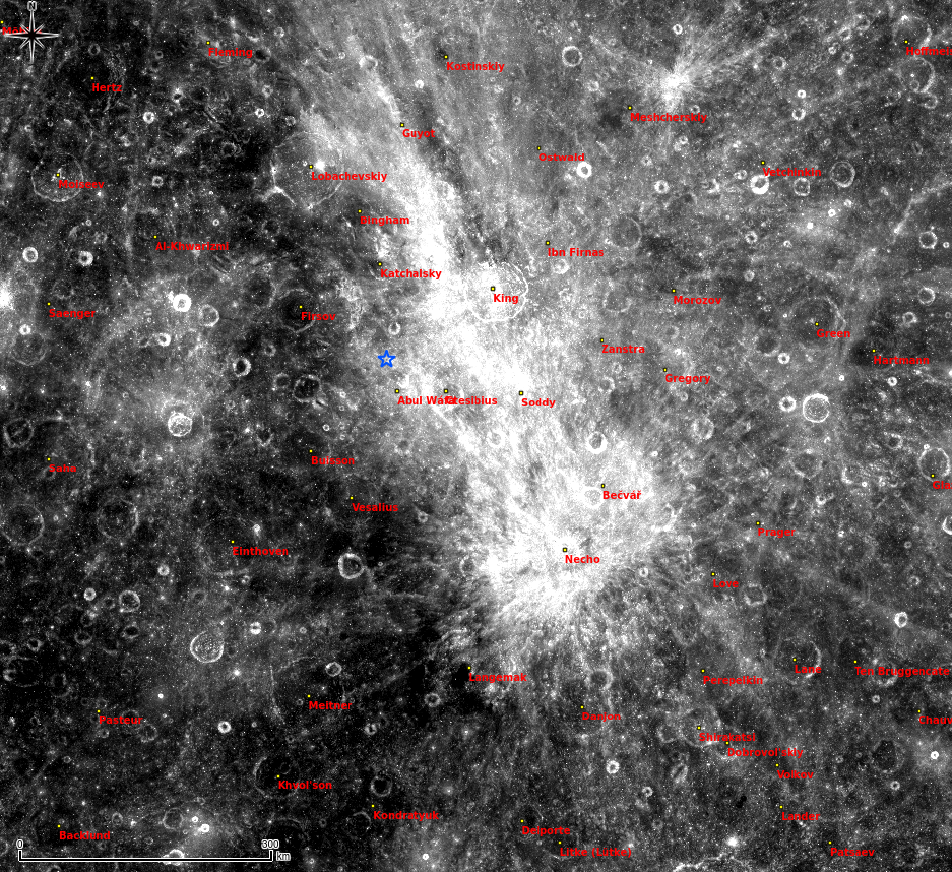
Impact craters routinely excavate subsurface materials, exposing them in crater walls and in ejecta. The opening image highlights an unnamed fresh crater (480 m in diameter) with numerous dark splotches. Inside the crater cavity, dark splotches (low reflectance materials) occur from the middle to the trim of the crater and spread outward beyond the rim crest. Several small craters (<100 m in diameter) with similar dark splotches also occur in this region (outside the area shown above), suggesting that the dark materials were likely excavated from an extensive subsurface layer. The distribution of the dark halo craters informs us about the horizontal extent of these subsurface materials.
The crater in the opening image is found 116 km from the southwestern rim of King crater (76 km in diameter), located in the farside highlands. Unlike in the mare, pyroclastic deposits are unlikely to be the low-reflectance material (seen in the opening image) here in the middle of the highlands with no indication of volcanic activity near here. So, what is this low reflectance layer?

The rays of Necho crater extend out ~680 km (see image below) crossing over King crater and the area in today's Featured Image. Since the area of opening image is crossed by the Necho ray deposits the excavated dark layer might be the original mature surface (now covered by Necho's high reflectance rays).

Due to the lack of atmosphere on the Moon, the photometric effect is very strong. Thus, it is hard to identify the relationships between the different layers using low-Sun images (images with large incidence angles, near sunrise or sunset); however, high-Sun images (those with low incidence angles, near noon) display clearly the relationships between units, which helps us reconstruct the resurfacing history of this area.
Related posts:
Dark-haloed crater in Mare Humorum
Dark streaks in Diophantus crater
Dark Craters on a Bright Ejecta Blanket
Published by Hiroyuki Sato on 22 November 2014